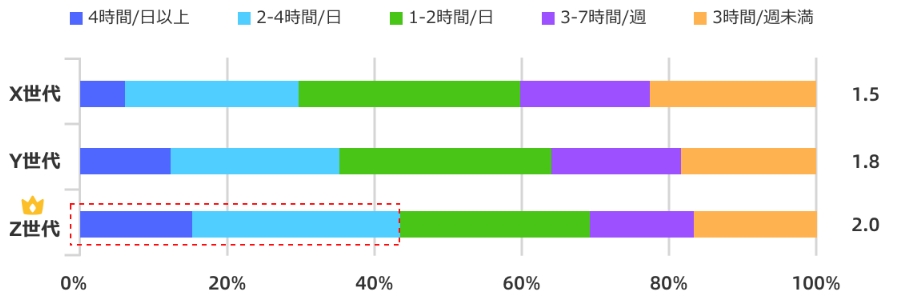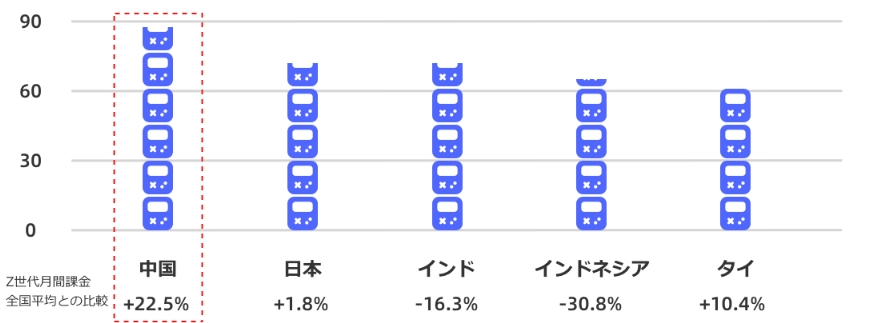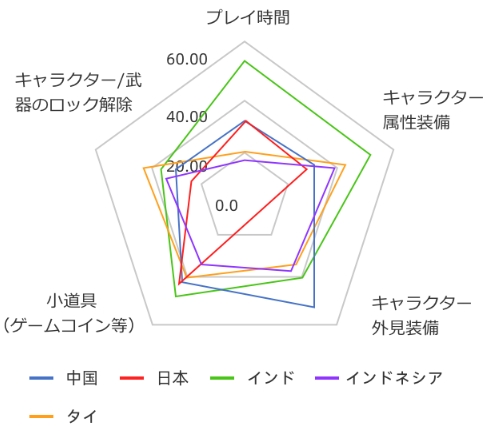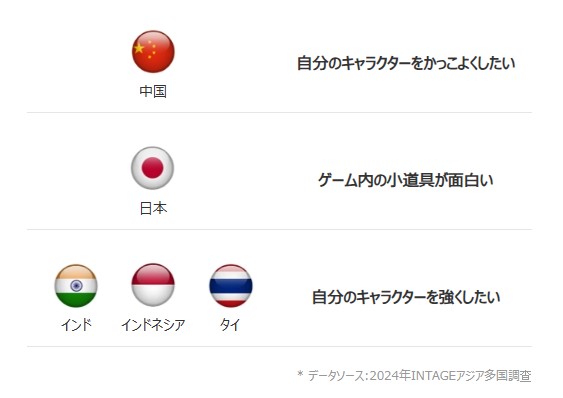[China] Gaming spending among Generation Z in Asia: Regional differences in usage patterns
- Release date: Aug 22, 2025
- Update date: Aug 22, 2025
- 1620 Views

Time spent playing mobile games in China

Data source: 2024 INTAGE Asia Multi-Country Survey
Definitions: Generation X: born between 1965 and 1980, Generation Y: born between 1981 and 1995, Generation Z: born between 1996 and 2010
First, regarding play time, it has become clear that the average daily play time of China's Generation Z is longer than that of other generations.
The difference is significant when compared to the X and Y generations, with over 40% of Gen Z spending more than two hours a day playing mobile games, and over 15% of them spending more than four hours a day.
On the other hand, only about 5% of the X generation spend more than four hours playing games, indicating that Gen Z, who are “digital natives” familiar with smartphones and digital environments, tend to spend more time playing mobile games.
Percentage of mobile game spending by Generation Z in each country

Data source: 2024 INTAGE Asia Multi-Country Survey
Furthermore, a comparison of the mobile game spending rates of Generation Z in five countries (China, Japan, India, Indonesia, and Thailand) revealed that Generation Z in China is the most active in spending money on mobile games.
Not only do they have the highest percentage of spenders, but the monthly average spending of Generation Z in China is also 22.5% higher than the national average.
These results show that young people in China are a very important consumer group in the mobile game market.
In-app purchases in mobile games

Next, when comparing in-game purchases among Gen Z in five countries, it was found that Japanese Gen Z had the highest percentage of purchases for “props,” while Chinese Gen Z were most enthusiastic about purchasing “character appearance equipment.”
On the other hand, the Z generation in India tends to have the most diverse and dispersed payment items, with notable payments for “extended play time,” “character attribute equipment,” and “props.” The Z generation in Indonesia and Thailand tends to make fewer payments for “extended play time,” but instead tends to make more payments for “character attribute equipment.”
Reasons for in-app purchases in mobile games

Furthermore, the reasons for making in-game purchases vary by country: Chinese Gen Zers want to “make their characters look cool,” Japanese Gen Zers find “in-game items interesting,” and Gen Zers in India, Indonesia, and Thailand want to “make their characters stronger.”
As this survey shows, even when it comes to in-game purchases, the reasons for spending money and the items purchased vary greatly from country to country.
This article is a translation of an article by Intage China using an AI translation tool.
-

Author profile
Intage China
***
-

Editor profile
Chew Fong-Tat
***
 Global Market Surfer
Global Market Surfer CLP
CLP